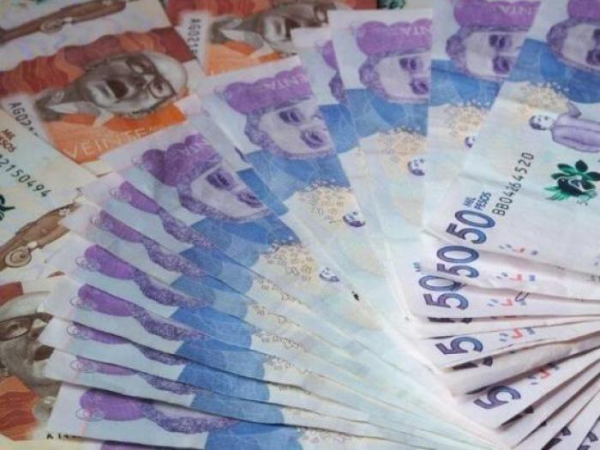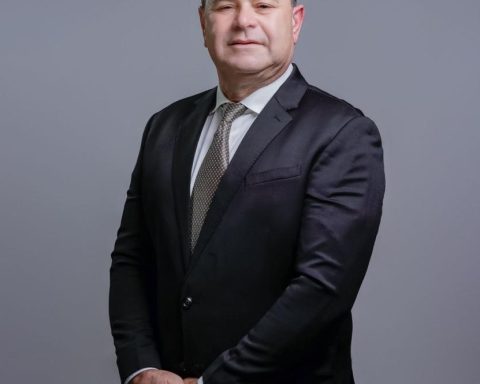The Colombian economy grew 8.5% during the first quarter in 2022. This was made official by the National Administrative Department of Statistics (Dane), and reported that during the first three months of the year, the Gross Domestic Product (GDP) was especially boosted by the commerce, industry and entertainment sectors, and from the point of view of spending, private consumption, and to a lesser extent investment, were the markers of the economy.
(GDP grew 8.5% in the first quarter of 2022).
The result was better than the market expected, which placed its projections in a range between 6% and 8.3%, in the midst of a global situation in which some economies, such as the US and the eurozone, have slowed down , for the escalation of inflation and the invasion in Ukraine, and it was not diminished by circumstantial elements such as the omicron variant that hit the country in January, or even the electoral environment.
Of the 12 sectors that Dane measures for the national economy, 10 presented positive variations. The greatest dynamism was registered in the branch of artistic activities and entertainment, which continues to recover after the closures of the pandemic and grew 35.7% compared to the first quarter of 2021.
The sector of information and communications grew 20.6%, followed by commerce, transportation, accommodation and food services (15.3%), manufacturing industries (11.1%), professional, scientific and technical activities (9.7% ) and public administration and defense (6.2%).
Construction expanded 5.2%, public service provision activities grew 4.9%, the real estate sector 2.1%, and mining and quarrying 1.0%.
(Will Colombia return to investment grade soon? This says Fitch).
On the other hand, the lagging sectors were financial and insurance activities (-3.2%) and agriculture (-2.5%). The first, as explained by the director of Dane, Juan Daniel Oviedo, saw this result due to a circumstantial event in the insurance sector, due to the payment of the Hidroituango policy.
In agriculture, the fall was explained by “a change in trend in agricultural activities, after seeing positive points of growth since the third quarter of 2020”, according to Oviedo, related to the decumulation of inventories in rice, and lower production, together with a drop in coffee production, which left a contraction of -19%.
In addition, Oviedo highlighted that“despite modest results and some negative signs, mining and quarrying activities manage to see a change in trend”, and how an important advance was made in the construction sector, especially in the branch of residential and non-residential buildings.
At current prices, GDP for the first quarter of 2022 was $326.77 trillion.
OFFER APPROACH
On the spending side, the GDP was especially boosted in the first quarter by an 11.8% growth in final consumption spending, and by a 19.7% growth in gross capital formation. Within the final consumption expenditure, there was a growth of 12.2% in the case of household consumption, while the Government’s consumption expenditure was 8.6%.
As explained by Oviedo, within the household component, purchases of semi-durable goods were the ones that saw the most important boost, with growth of 34.3%, “for the effects of the day without VAT on audio and video equipment and computer equipment”. Household spending on durable goods grew 12.2%, while non-durable goods only grew 4.3%, due to the effect of inflation on food.
As for consumer spending by households on services, there was an increase of 15.3%.
In the case of gross capital formation, this grew by 11% in relation to investments in fixed capital, and in its disaggregation, were investments in machinery and equipment (32.3%) and in intellectual property products ( 15.5%) the ones that grew the most.
Oviedo also added that “Gross fixed capital formation represents the important dynamics that we see in the construction sector, in residential and non-residential buildings.”
POSITIVE OUTLOOK
Both for the government, as well as for the unions and the experts, the results of the first quarter were positive.
The Minister of Finance, José Manuel Restrepo, celebrated that “The growth rate of 8.5% exceeds most of the forecasts that were made, and even those that the Government had for this period”and highlighted not only institutional actions, but also the resilience of the business community, as the path to more than double-digit results in sectors such as industry, commerce, and artistic activities.
(Economic growth would strengthen in 2022).
From the Andi, the businessmen’s union, its president Bruce Mac Master, cataloged the data as “excellent news” for the country “which shows the continuity of the favorable trend registered since the second quarter of last year”.
Mac Master acknowledged the uncertainty derived from the international context and the pandemic, but stressed that the country “has remained on a positive path.”
Mauricio Hernández, BBVA Research economist for Colombia, highlighted how household consumption continued to make the greatest contribution to GDP, and that its share of aggregate demand also increased from 73% in March 2021 to 76% in March 2022.
“The recovery of the labor market explains part of this behavior, but this performance continues to suggest that household savings remain low and that the increase in the consumer credit portfolio remains relevant to explain these figures”, Hernandez indicated.
The economist also highlighted the role of investment, and how “expenditure on machinery continues to lead this line.”
On the other hand, Sergio Olarte, chief economist at Scotiabank Colpatria, explained that the growth of 8.5% in annual terms, and 1%, in quarterly terms with respect to the last quarter of last year, occurred “On account of a very significant recovery in investment that had been quite lagging and quite dynamic household consumption and public consumption that accelerated in the first quarter of the year.”
LAURA LUCIA BECERRA ELEJALDE
Twitter: @LauraB_Elejalde


















